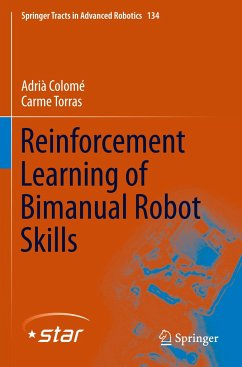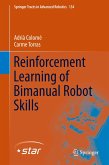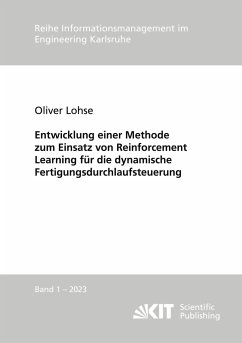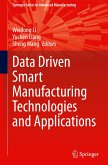This book tackles all the stages and mechanisms involved in the learning of manipulation tasks by bimanual robots in unstructured settings, as it can be the task of folding clothes.
The first part describes how to build an integrated system, capable of properly handling the kinematics and dynamics of the robot along the learning process. It proposes practical enhancements to closed-loop inverse kinematics for redundant robots, a procedure to position the two arms to maximize workspace manipulability, and a dynamic model together with a disturbance observer to achieve compliant control and safe robot behavior.
In the second part, methods for robot motion learning based on movement primitives and direct policy search algorithms are presented. To improve sampling efficiency and accelerate learning without deteriorating solution quality, techniques for dimensionality reduction, for exploiting low-performing samples, and for contextualization and adaptability to changingsituations are proposed.
In sum, the reader will find in this comprehensive exposition the relevant knowledge in different areas required to build a complete framework for model-free, compliant, coordinated robot motion learning.
The first part describes how to build an integrated system, capable of properly handling the kinematics and dynamics of the robot along the learning process. It proposes practical enhancements to closed-loop inverse kinematics for redundant robots, a procedure to position the two arms to maximize workspace manipulability, and a dynamic model together with a disturbance observer to achieve compliant control and safe robot behavior.
In the second part, methods for robot motion learning based on movement primitives and direct policy search algorithms are presented. To improve sampling efficiency and accelerate learning without deteriorating solution quality, techniques for dimensionality reduction, for exploiting low-performing samples, and for contextualization and adaptability to changingsituations are proposed.
In sum, the reader will find in this comprehensive exposition the relevant knowledge in different areas required to build a complete framework for model-free, compliant, coordinated robot motion learning.
"Readers familiar with robotic manipulation will appreciate this work the most, as it is situated in the most recent journal articles and conference papers." (Benjamin Wells, Computing Reviews, February 16, 2021)
"This book should be of interest to practicing and research engineers as well as Ph.D. students in the area of robotics and artificial intelligence in engineering practices and applications." (Clementina Mladenova, zbMATH 1436.93001, 2020)
"This book should be of interest to practicing and research engineers as well as Ph.D. students in the area of robotics and artificial intelligence in engineering practices and applications." (Clementina Mladenova, zbMATH 1436.93001, 2020)








